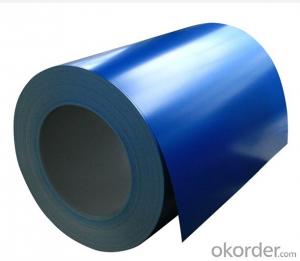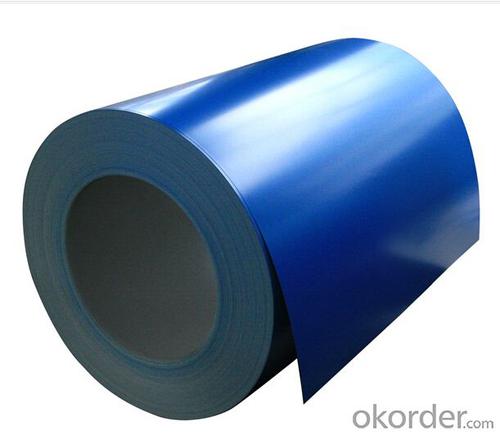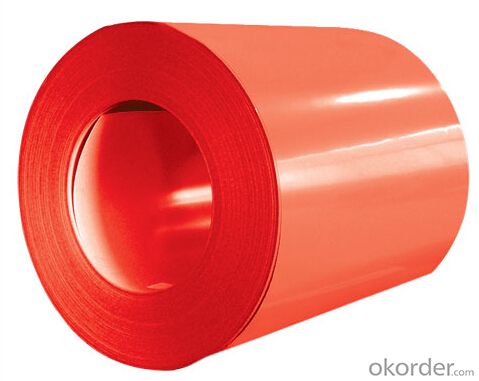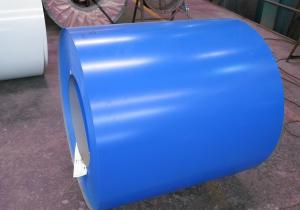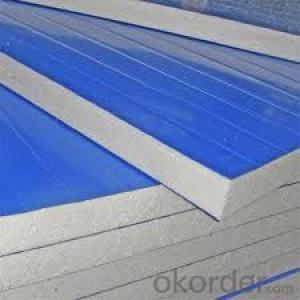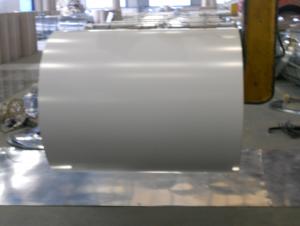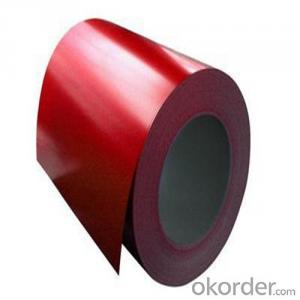Prepainted Galvanized Steel Coil PPGI Galvanized Steel in Coils
- Loading Port:
- China main port
- Payment Terms:
- TT OR LC
- Min Order Qty:
- 10 m.t.
- Supply Capability:
- 10000 m.t./month
OKorder Service Pledge
OKorder Financial Service
You Might Also Like
1.Bried Introduction:
1).Colr steel is coated with organic layer, which provides higher anti-corrosion property and longer lifespan than that of galvanized steel sheets.
2).The base metals for color steel consist of cold rooled. HDG lectro-galvanized and hot-dip alu-zinc coated steel. The finish coats for color tels can be classified into groups as follows: polyester, silicon modiied polyesters, polyvinylidene fluoride, high-durability polyester, etc.
3).The production process has evolved from one-coating-and-oe-baking to double-coating-and-double-baking, and even three-coatig-and-three-baking.
4).The color of the color steel has a very wide selection, like orange, creamcolored, dark sky blue, sea blue, bright red, ivory white, procelain blue, etc.
5).The color teels can also be classified into groups by their surface textures, namely regular prepainted sheets, embossed sheets and printed sheets.
2. Steel coil, prepainted steel coil,prepainted galvanized steel coil Advantages:
(1).High strength, Good corrosion
(2).Well rainproof performance
(3). Easy to install and remove
(4).Competitive price with best quality
3.Image of prepainted steel coil:
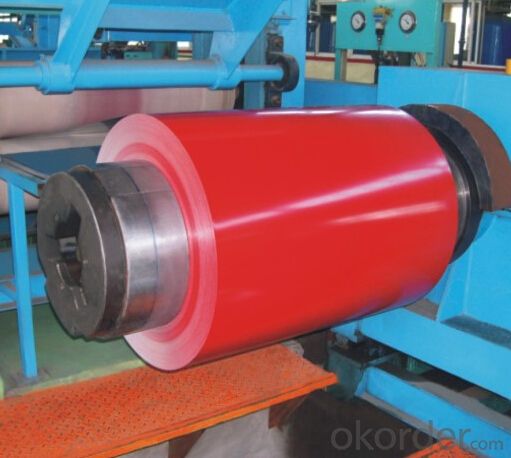
4.Data of prepainted steel coil:
prepainted galvanized steel coil | ||
Brand Name: | ALUSTAR-PG | |
Standard: | ASTM; ASTM; EN;GB | |
Grade: | CGLCC /CGCC | |
Size: | Thickness: | 0.16-1.5mm |
Width: | ≤ 1250mm | |
Length: | Coil or client’s requirements | |
Base plate: | galvanized steel coils | |
Color: | RAL color or accoridng the sample | |
Coil ID: | 508 /610mm | |
Coil Weight: | 3-10 Tons | |
Type : | coil or sheets | |
5.FAQ
We have organized several common questions for our clients,may help you sincerely:
①How about your Warranty?
Warranty: 1-Year for the whole light. Warranty is based on correct storage, installation, using and maintenanc
②How to guarantee the quality of the products?
We have established the international advanced quality management system,every link from raw material to final product we have strict quality test;We resolutely put an end to unqualified products flowing into the market. At the same time, we will provide necessary follow-up service assurance.
③How long can we receive the product after purchase?
In the purchase of product within three working days, We will arrange the factory delivery as soon as possible. The pecific time of receiving is related to the state and position of customers.Commonly 7 to 10 working days can be served.
- Q: How are steel coils used in the production of pipes?
- Steel coils are used in the production of pipes by being uncoiled and then passed through a series of forming and welding processes. The coils are flattened and shaped into the desired pipe size and then welded together to create a continuous length of pipe.
- Q: What is the weight of a steel coil?
- The weight of a steel coil can vary depending on its size and thickness. Generally, a steel coil can weigh anywhere from a few hundred kilograms to several tonnes.
- Q: What are the different coil coating options available for steel coils?
- Steel coils have several coil coating options available, each with its own unique benefits and applications. 1. The affordability and versatility of polyester coil coatings make them the most commonly used option. These coatings offer good durability, weather resistance, and color retention, making them suitable for a wide range of indoor and outdoor uses. 2. PVDF coil coatings provide excellent resistance to fading, chalking, and chemical exposure. They are highly durable, making them ideal for exterior applications that require long-term performance. PVDF coatings also have good dirt and stain resistance. 3. Polyurethane coil coatings offer exceptional adhesion and flexibility. They are often used in applications that require excellent resistance to abrasion, impact, and corrosion. Polyurethane coatings also provide good color retention and weather resistance. 4. SMP coatings combine the benefits of polyester and silicone coatings. They offer enhanced resistance to chalking, fading, and industrial pollutants. SMP coatings are commonly used in agricultural, industrial, and architectural applications. 5. PVC coil coatings provide excellent chemical resistance and are frequently used in applications where resistance to acids, alkalis, and solvents is crucial. These coatings also offer good color retention and have a low environmental impact. 6. Epoxy coatings provide exceptional adhesion and corrosion resistance. They are often used in demanding environments such as the marine or chemical processing industries. Epoxy coatings can be customized to meet specific performance requirements. 7. Acrylic coatings offer excellent color retention, UV resistance, and gloss retention. They are commonly used in architectural applications where aesthetics are important. Acrylic coatings also provide good resistance to weathering and chemicals. When choosing a coil coating option, it is important to consider the specific requirements of the application. Factors such as durability, weather resistance, chemical resistance, adhesion, and color retention should be taken into account to ensure the best performance and longevity of the steel coils.
- Q: How are steel coils inspected for oil or rust residues?
- Steel coils are inspected for oil or rust residues through a series of visual and physical examinations. First, the coils are visually inspected by trained personnel who closely examine the surface of the steel for any signs of oil or rust residues. They look for discoloration, stains, or any other abnormalities that could indicate the presence of contaminants. In addition to the visual inspection, various techniques are used to detect oil or rust residues. One common method is the use of solvent cleaning. A solvent is applied to the surface of the steel coil, and if any oil or rust residues are present, they will dissolve and become visible. This allows the inspectors to identify and remove any contaminants. Another method used for inspection is ultrasonic testing. Ultrasonic waves are sent through the steel coil, and any variations in the waves' reflections can indicate the presence of oil or rust residues. This non-destructive testing method provides a deeper analysis of the condition of the steel, ensuring a more thorough inspection. Furthermore, specialized equipment such as magnetic particle inspection or eddy current testing may also be employed. Magnetic particle inspection involves applying magnetic particles to the steel surface, which will gather around any areas with oil or rust residues. Similarly, eddy current testing uses electromagnetic induction to detect surface irregularities caused by contaminants. Overall, a combination of visual inspection and various testing techniques is employed to thoroughly inspect steel coils for oil or rust residues. These rigorous inspections ensure that the coils meet the required quality standards and are free from any contaminants that could compromise their performance or durability.
- Q: How are steel coils packaged for transportation?
- Steel coils are commonly prepared for transportation through various methods in order to guarantee their secure and safe delivery. The packaging procedure consists of multiple steps that serve to shield the coils from harm during transit and facilitate their handling and loading onto trucks, ships, or trains. To begin with, steel coils are tightly wound and fastened using steel straps or bands to maintain their compactness and prevent unwinding. These straps are typically made from high-strength steel and securely fastened at regular intervals around the coil's circumference. This not only preserves the coil's shape but also prevents any movement while in transit. Following this, the coils are frequently positioned on wooden or steel pallets to establish a stable foundation and enable easy handling with forklifts or cranes. The pallets are usually tailored to fit the dimensions of the coils and designed to withstand the weight and stress of the loaded coils. In order to provide additional protection, steel coils are often enveloped in a layer of protective material such as plastic or paper to shield them from moisture, dust, and other potential contaminants. This wrapping also serves to prevent any scratching or damage to the coils' outer surface. Moreover, to ensure the coils remain secure and avoid shifting during transit, they are oftentimes housed within a steel or wooden crate. These crates offer an extra layer of protection and stability, particularly when transporting larger coils or multiple coils together. Lastly, once the coils are properly packaged, they are typically loaded onto flatbed trucks, shipping containers, or railway cars for transportation. During the loading process, great care is taken to ensure the coils are positioned securely and that weight distribution is balanced to prevent any potential damage or accidents while in transit. In conclusion, steel coils are packaged for transportation by securely binding them with steel straps, placing them on pallets, covering them with protective material, and, if necessary, enclosing them within crates. This packaging procedure serves to safeguard the coils and guarantee their secure and efficient transportation to their intended destination.
- Q: I'm doing a project on stainless steel dining utensils and its a little more difficult than i thought it would be. There are no sites on the web that tells the creator or when it was first used. There's no sites that that i can see of that talk about the history of stainless steel dining utensils, only dining utensils in general. Please help, i can't change my project now ):
- The development of 18/10 stainless steel was the brainchild of Harry Brearley who, in 1913, was working on a project to prevent rifle barrels from corroding so much during use. His analysis of the rifle barrels involved having to dissolve them in acid but, by chance, he noticed that steel which had a high chromium content did not dissolve in the acid. He experimented with varying proportions of chromium and finally produced a stainless steel with 12.8% chromium. He moved to Thos Firth Sons in 1914 and commercial production of stainless steel cutlery began. Refinements were necessary because early versions of stainless steel knives were harder to produce and polish, and they would not cut as well as the existing knives.
- Q: How do steel coils contribute to the energy infrastructure sector?
- Steel coils play a vital role in the energy infrastructure sector by providing the necessary materials for the construction and maintenance of various energy-related structures and equipment. Firstly, steel coils are widely used in the production of pipelines, which are the lifelines of the energy industry. These pipelines transport oil, natural gas, and other energy resources over long distances, ensuring a steady supply to power plants and other energy facilities. Steel coils are used to manufacture seamless and welded pipes that possess high strength, durability, and resistance to corrosion, making them suitable for handling the harsh conditions of energy transportation. In addition to pipelines, steel coils are used in the production of storage tanks for oil, natural gas, and other fuels. These tanks are crucial for storing large quantities of energy resources, ensuring a continuous supply even during periods of high demand. Steel coils are utilized to fabricate the tank shells, providing the necessary strength and structural integrity to withstand the pressure and environmental factors associated with energy storage. Furthermore, steel coils are instrumental in the construction of power plants and other energy infrastructure facilities. They are used to manufacture structural components such as beams, columns, and supports, which provide the foundation and stability required for the safe operation of these facilities. Steel coils also contribute to the production of equipment such as turbines, generators, and transformers, which are essential for converting energy into usable forms and distributing it to end-users. Moreover, steel coils are utilized in the construction of transmission towers and electrical grids. These structures and networks are responsible for transmitting electricity from power plants to residential, commercial, and industrial consumers. Steel coils are used to manufacture the towers and poles that support high-voltage transmission lines, ensuring their stability and reliability in transmitting electricity over long distances. In summary, steel coils are indispensable in the energy infrastructure sector as they provide the necessary materials for the construction, maintenance, and operation of pipelines, storage tanks, power plants, transmission towers, and electrical grids. Their strength, durability, and resistance to corrosion make them an ideal choice for withstanding the demanding conditions of the energy industry, thereby ensuring a reliable and efficient energy supply to meet the growing needs of society.
- Q: this is for a school project due morrow can u please answerwhat are disadvantages of stainless steelplease also show were u got info ty
- it sometimes rusts
- Q: Are steel coils corrosion-resistant?
- Yes, steel coils can be made corrosion-resistant through various methods such as coating them with protective layers or using corrosion-resistant alloys.
- Q: With the Reduced weight of steel,wouldn't the projectile be at a much higher velocity when fired causing more damage?I mean l couldn't steel be worked to seal the bore,not damage the rifling and still cheap enough to mass produce,and be light enough to carry much more ammo.
- As others have mentioned, steel lacks the ductility to conform to rifling and seal the bore. Cannon projectiles, which usually are made of steel, overcome this problem by using one or more driving bands of softer metal, usually brass or bronze, but sometimes even plastic, on the circumference of the projectile, usually close to the base. The body of the projectile rides on the lands, while the driving band fills the grooves, seals the bore and imparts the stabilizing spin to the projectile.
Send your message to us
Prepainted Galvanized Steel Coil PPGI Galvanized Steel in Coils
- Loading Port:
- China main port
- Payment Terms:
- TT OR LC
- Min Order Qty:
- 10 m.t.
- Supply Capability:
- 10000 m.t./month
OKorder Service Pledge
OKorder Financial Service
Similar products
Hot products
Hot Searches
Related keywords
